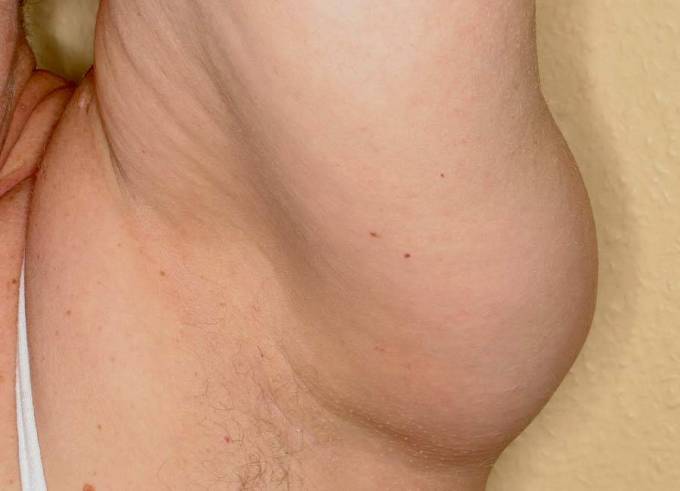Your Guide to Understanding Lipoma Treatment Options
Published By Bisma Jamal, 24 Sep 2024

Lipomas are benign tumors composed of fat cells that typically develop just beneath the skin. While they are usually harmless and painless, many individuals seek treatment for cosmetic reasons or discomfort. Understanding the various Lipoma Treatment in Dubai options available can help you make informed decisions about your health. This guide will explore the common treatment methods, the factors influencing treatment choices, and what to expect during the process.
What is a Lipoma?
Before diving into treatment options, it’s essential to understand what a lipoma is. Lipomas are slow-growing lumps that can appear anywhere on the body but are most commonly found on the torso, neck, arms, and thighs. They are typically soft to the touch, movable, and painless. While lipomas are generally harmless, they can sometimes become uncomfortable or may grow in size, prompting individuals to seek treatment.
When to Consider Treatment
Most lipomas do not require treatment unless they cause pain, discomfort, or cosmetic concerns. You might consider treatment if you experience:
- Discomfort or pain from the lipoma’s location.
- Rapid growth of the lipoma.
- Concerns about its appearance.
Consulting with a healthcare provider can help determine the best course of action based on your specific situation.
Lipoma Treatment Options
1. Observation
In many cases, if a lipoma is not causing any issues, a "watchful waiting" approach may be taken. This involves regular monitoring of the lipoma for changes in size or symptoms. If it remains stable, treatment may not be necessary.
2. Surgical Excision
Surgical excision is the most common and effective treatment for lipomas. This procedure involves:
- Consultation: A healthcare provider will assess the lipoma and discuss the procedure with you, including potential risks and benefits.
- Anesthesia: Local anesthesia is administered to numb the area.
- Removal: The surgeon makes an incision over the lipoma and removes it entirely.
- Closure: The incision is then closed with stitches.
Benefits:
- Complete removal of the lipoma.
- Low recurrence rate.
Considerations:
- Scarring may occur at the incision site, but surgeons often use techniques to minimize this.
3. Liposuction
Liposuction is a less invasive option that may be suitable for certain lipomas, particularly larger ones. This technique involves:
- Consultation: Similar to surgical excision, the provider will evaluate the lipoma and discuss liposuction as an option.
- Anesthesia: Local anesthesia is typically used.
- Procedure: A small incision is made, and a thin tube (cannula) is inserted to suction out the fatty tissue.
Benefits:
- Minimally invasive with reduced scarring compared to excision.
- Quicker recovery time.
Considerations:
- Not all lipomas can be effectively treated with liposuction, and there is a possibility that some fatty tissue may remain, leading to recurrence.
4. Injection Therapy
In some cases, injection therapy may be used to shrink a lipoma. This treatment involves:
- Steroid Injections: Corticosteroids may be injected directly into the lipoma to reduce its size. However, this method often does not eliminate the lipoma completely.
Benefits:
- Non-invasive and can be performed in a clinic setting.
Considerations:
- Not always effective for all lipomas, and multiple injections may be needed.
5. Other Non-Surgical Methods
Research is ongoing into alternative treatments for lipomas, including:
- Cryotherapy: Freezing the lipoma to reduce its size.
- Radiofrequency Ablation: Using radio waves to heat and destroy fat cells.
While these methods may show promise, they are not yet widely accepted or proven to be effective.
Factors Influencing Treatment Choice
When deciding on a treatment option for a lipoma, several factors come into play:
- Size and Location: Larger lipomas or those in sensitive areas may be better suited for surgical excision.
- Symptoms: If the lipoma is causing pain or discomfort, removal is likely the best option.
- Personal Preferences: Patients should consider their comfort with surgical procedures and recovery time.
- Health Status: Underlying health conditions may influence the choice of treatment.
What to Expect During Treatment
Before Treatment
- Consultation: A thorough examination and discussion of your medical history and treatment options.
- Preparation: Instructions may be provided regarding eating, drinking, and medications before the procedure.
During Treatment
- Anesthesia: Local anesthesia will be administered to ensure comfort.
- Procedure: The selected treatment will be performed, whether it’s excision, liposuction, or injection.
After Treatment
- Recovery: Patients may experience some swelling, bruising, or discomfort, which can usually be managed with over-the-counter pain relievers.
- Follow-Up: A follow-up appointment may be scheduled to monitor healing and discuss any concerns.
Conclusion
Understanding your lipoma treatment options is crucial in making informed decisions about your health. While many lipomas do not require treatment, options like surgical excision, liposuction, and injection therapy are available for those seeking relief from discomfort or cosmetic issues. Consulting with a qualified healthcare provider will ensure you receive personalized care tailored to your unique needs. With the right approach, you can effectively manage your lipoma and enhance your quality of life.
